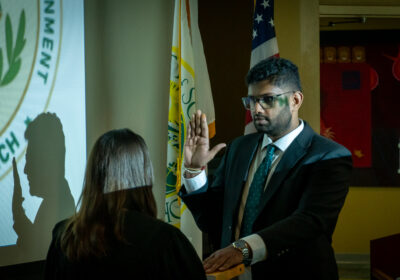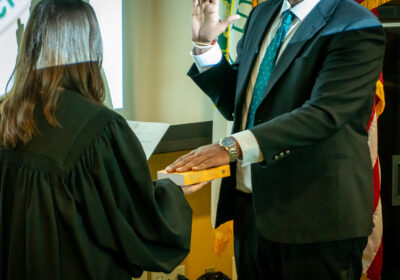Long-term impact of stimulus funds unknown
As the federal stimulus bill celebrates its two-year anniversary this month, opinions on its effectiveness remain diverse.
USF has received $27 million of the $787 billion stimulus package. However, that money was completely dispersed over the past two years, requiring recipient programs to secure a new source of funding to stay afloat, said Rebecca Puig, director of the Division of Sponsored Research.
“The federal agencies notified us that these funds will be coming up with short turnaround and the awards will be around no longer than for a two year period and whatever we had proposed had to be ready to go,” she said. “Most of these were programs already underway and some were supplement funding, meaning we already have a research program with the agency. The funds going away won’t impact it.”
But not all programs have supplemental funding, economics professor Joseph DeSalvo said, and that could pose a problem once the stimulus money runs dry.
“Suppose we’re going to use the money to hire a new faculty member. You hire that person in the first year and then the money is gone, but you have to keep paying that salary in the future when the money isn’t coming in,” he said. “It’s dangerous and one has to be careful in deciding how to spend the money. It will stimulate the economy in the short run, but as soon as that stimulus money stops coming in, the economy will contract to what it was before.”
The stimulus funds were first introduced on Jan. 6, 2009 through the American Recovery and Reinvestment Act (ARRA) and were granted to individual applicants once their proposed uses for the money were approved.
According to the ARRA, the act was created to help stimulate the economy, create jobs, assist those most impacted by the recession, spur technological advances in science and health, invest in sectors like transportation that provide long-term economical benefits and stabilize state and local government budgets.
DeSalvo said the act can create a “Catch-22” situation.
“You’ll have something that will last a long time and will have some benefits and will also have some costs that were not anticipated,” he said. “Looking at it from the point of view from someone who is receiving the money, we would take it. Hardly anybody is going to turn down money that is going to be offered to you. You have to be very careful on how you’re going to spend that money. I don’t expect any kind of long-term … economic impact.”
Jay Wolfson, a professor for the College of Public Health and Medicine, was one of the 106 federal grant recipients at USF. He was the principal investigator and project director of “PaperFree Florida Health Information Technology,” an initiative to convert paper medical records to electronic documents.
Wolfson said he received a $6 million grant in July 2010 and has since trained 12 “health ambassadors” to help physicians transition their records. He plans to train 20 ambassadors by the end of the year, he said, once he receives the next increment of the grant in April.
“We want to help physicians understand … that this is something they are going to need to do anyway and that they are going to want to do to improve quality of care, safety, outcomes and cost,” he said. “Then we’ve also developed a graduate certificate program, which is going to transform into a graduate degree program in health information technology that will train more of these electronic health ambassadors over time and feed them out into the workforce.”
Susan MacManus, professor of public administration and political science, said the effectiveness of the funds are hard to determine since only a small percentage of people pay attention to how ARRA funds are handled.
“I don’t think a lot of people know. Most people do not pay attention to the specifics of what money comes into the University. It’s not something that’s on the front burner of many people’s minds,” she said. “If you’re a conservative you’re more likely to think the stimulus money has not been effective. If you’re a liberal you’ll think ‘bring it on, bring more in.’ If you take a survey on campus of faculty and staff, less than one half of one tenth of one hundredth of a percent would even know how the stimulus funds are used on campus. So it’s hard to say how things are effective if people don’t know … the details.”
Money, like professors or electronic medical records, takes time to make a significant impact, she said.







